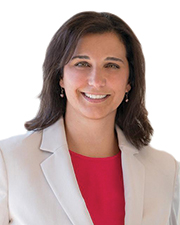News:
Finance
Posted: June 9, 2010
Buckets of retirement income: How to structure your accounts
This article is about how to structure your accounts so you can generate a steady and safe retirement income stream. I use the word "buckets" because it is an easy to remember and easy to understand concept.
The bucket approach is really just another way of saying you need different types of accounts to withdraw income. The strategy basically consists of the following three buckets or accounts: the first bucket or account would typically be your bank account and would have two years worth of income. This account needs to be very safe and secure. Typically you would have your funds in your savings account. The second account should be invested in high quality bond funds ideally with a short to intermediate duration to lower your interest rate risk. These funds may fluctuate however the goal of this account is to have your money earn some interest greater than a savings account but still be safe and conservative. The third bucket or account would have your long term funds invested within this account and would primarily be your growth orientated investments such as stocks and ideally dividend paying income producing stocks.
As an example, let's say a retiree needed to produce $50,000 a year growing with inflation over and above his/her social security and/or pension. For purposes of this example and to keep it simple let's assume all of the funds are in taxable accounts and our retiree has accumulated $1 million by retirement age. If the retiree withdraws $50,000 annually growing with inflation we are assuming a reasonable 5% withdrawal rate. Using the bucket approach to retirement income our retiree would keep $100,000 in the bank in their savings account (two years worth of income), $150,000 invested in high quality short/intermediate term bond funds for our second bucket (three years worth of income) and our third bucket would have $750,000 invested in a diversified portfolio with an emphasis on dividend paying stocks. If the investor's goal was to have a balanced portfolio of 50% on the stock side and 50% on the bond/cash side, the third bucket would be allocated with $500,000 to stocks and the remaining $250,000 to higher yielding bond funds. This would be structured so all of the interest from the bond funds and dividends from the stock side would refill bucket number one. You need to pay careful attention to the overall balance of the portfolio and maintain the original allocation or make adjustments as your overall objectives and risk tolerance change.
This bucket approach to retirement income has many benefits for retirees. I think the greatest benefit of this approach is psychological. The income stream is safe and secure for the next five years and is continually adjusted to maintain secure income for the immediate future. Because the income is safe, investors can ride out the inevitable ups and downs of the stock funds while still receiving an income stream in the form of stock dividends replenishing the first bucket. The stock allocation does not have any guarantees although historically the returns have been much greater than the increase in the cost of living. Today's retires will need some growth and a growing income stream to outpace rising prices in the long run...especially as today's retirees live longer. Enjoy your buckets of income!
Brian Hill is ChFC at Capital Analysts of New England, Quincy, Mass.
Tags:
Finance
MORE FROM Finance
Eastern Bank donates $2 million to Lynn Public Schools
Lynn, MA The city of Lynn’s purchase of the former Eastern Bank headquarters at 195 Market St. is paying dividends in more ways than one. In issuing an RFP in the spring of 2024, the city was seeking to acquire multi-purpose space,

Columns and Thought Leadership

Real estate without good estate planning - a troublesome problem - by Daniel Calano
I spent the better part of a day this week working with attorneys on estate planning. I am clearly not an attorney, but I have learned much over the years while consulting on real estate, its potential, its future during the life of clients, as well as, shall we say, later.

The focus on price per s/f compared to the comparable sales used in the appraisal report - by Dennis Chanski
Over the past several weeks, I have completed appraisal assignments for private clients. Interestingly, after submitting these appraisals, I received several phone calls – not to question the value, content, or any incorrect information, but rather to discuss the price per s/f compared to the comparable sales used in the report.

Reverse exchanges and the challenges of a competitive real estate market - by Michele Fitzpatrick
Our current, highly competitive real estate market poses specific challenges for investors who are considering taking advantage of a tax-deferred 1031 exchange. In this market, investors will have no problem selling their current property if priced properly, but they may find it difficult to find a suitable replacement property

It’s a confusing real estate world: Don’t you think? - by Daniel Calano
The news is full of “never before” pronouncements. Never before has there been a pandemic so impactful on real estate. Never before has technology allowed for remote business meetings on such a frequent basis. Never before would people so comfortably work from home as to vacate office buildings, at least on Fridays and Mondays.









.png)